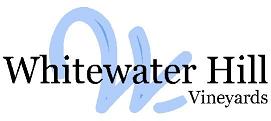|
|

theCompass mobile application is a winery, brewery, and distillery locator for North America. |
|
|
Whitewater Hill Vineyards

|
|
We offer free tastings, tours and information on the Grand Valley and wine industry. Tasting room hours are 10-6. During winter (approximately October - April) we are open only on week-ends; otherwise we are open every day. We carry a number of different wines and you can be sure you will find the wines that you like. The brands of wines change frequently as we offer numerous different labels that we have carefully selected to represent the best of Colorado. Many of these wines will be difficult to locate anywhere else.
|
|
|
Directions
Our winery and tasting room facility is located on 32 Road (state highway 141) in Grand Junction, Colorado. From I-70, take the Clifton exit and head south following the signs towards Montrose/Delta. We are on the east side of the highway at B Road.
View Map
|
View Weather
Cabernet Franc
Cabernet Franc appears similar to Cabernet Sauvignon but is different in many respects. The leaf indentation is not as pronounced. It breaks bud and ripens about a week earlier. It does not develop deep skin color. At harvest clusters often appear immature because of the poor skin color, however fruit compositions achieve excellent balances. Surprisingly, wine color can be fairly dark but a shade lighter than Cabernet Sauvignon. It has a fruitier taste with significant tannin primarily in the front of the palate. Barrel aging in new american oak seems to create a more integrated wine than with other barrel programs.
|
Cabernet Sauvignon
Cabernet Sauvignon production in Colorado has risen swiftly to become second only to Merlot (2002). Mesa County has a sufficient growing season exists to fully ripen this late-season ripening variety. It produces outstanding color with an excellent balance of sugar, acid and pH. Cabernet Sauvignon responds well to a fully open canopy. Because of its vigorous growth habit, it can easily produce too much shade on the fruit clusters. Sun exposed clusters are protected by the thick skin from sunburn damage and respond with deeper coloring and slight raisining. This seems to produce higher aromatics and softer tannins in the wine as well as deeper color. An open canopy also aids in powdery mildew control, a disease to which this variety is particularly susceptible.
|
Chardonnay
Colorado Chardonnay is best when sunlight exposed and picked ripe. Our experience is that vertically dividing the canopy on the north side of vine row produces good sunlight exposure while providing cover on the south side of the canopy to protect the fruit from sunburn injury. If the canopy is allowed to continue to expand after canopy division, laterals will fill in on the north side that must be removed to retain the sunlight exposure. If Chardonnay is not sunlight exposed the wine will invariably have an undesirable herbaceous note. An open canopy also aids in powdery mildew control, a disease to which this variety is particularly susceptible.
|
Merlot
Merlot is the most widely planted variety in Colorado and accounts for 32% of the total production of wine grapes in the state (2000 Grower Survey). The Colorado State University Cooperative Extension has evaluated Merlot at its Orchard Mesa Research Center in Mesa County and states: The Merlot grape produces one of the best wines from Colorado. [...] In most years, Colorado Merlots are deep colored, very fruity and full bodied. (Richard A. Hamman Jr, et al, Colorado Grape Growers' Guide, 1996). Our experience with the variety indicates that the variety does well in heavy clay and stoney soils and forms winter hardy fruiting wood for the next year easily even with heavy irrigation. When spur-pruned, it less fruitful in its basal buds. It is also susceptible to alkali and salt leading to poor yields or vine death. Because of its floppy growth habit, it is difficult to shoot position upwards and catch wire clips aid in maintenance of a vertical shoot positioned canopy. The variety is very fruitful and cluster thinning may be necessary to keep the clusters open to sunlight and air.
|
Muscat Blanc á Petits Grains
Muscat Blanc á Petits Grains (the official name for the variety, a.k.a. Muscat Blanc, Muscat Canelli, and many other names, note that the Orange Muscat of California is the Moscato Fior d'Arancio of Italy and is not Muscat Blanc) is a versatile white table grape that is usually made into a sweet dessert wine but can also be fermented dry or used as a blending wine to increase aromatic complexity, this is the "secret" ingredient in many highly regarded wines.Muscat Blanc is generally regarded as the highest quality grape for winemaking in the Muscat family (e.g., Robinson, Jancis, "Vines Grapes & Wines", 1992, p. 182).
|
Syrah/Shiraz
Syrah (aka Shiraz, but not Petite Sirah) is conveniently productive, disease-resistant, late budding and early ripening. It produces dark skinned and flavorful fruit. The vine is easy to grow, but requires a well drained low-fertility soil, even then, it requires a divided canopy to spread out its shoots. It does not put a lot of energy into laterals unless constrained to too small a space, so once the canopy is opened, it stays open. It raisins about 10% before harvest, which concentrates the flavor and skin color. However, it can lose aroma and acidity if left on the vine for too long, it is therefore not recommended for port styles of wine. Wine color is an intense inky purple. Tannins are significant but soft. Therefore the wine ages well but also can be bottled for early consumption.
|
Add New Review
|
|